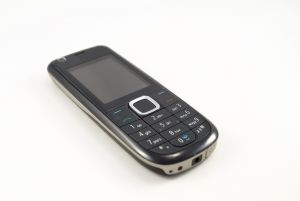

In the wake of tragic events like the recent hurricane disaster in New England, the first question on most minds will be, “Is my family OK?” Having a family communication plan as part of an overall home disaster strategy will hopefully answer that question.
A family communication plan can use a variety of strategies. They can involve phone trees, “text trees,” social media, amateur radio, the Red Cross check-in website SafeandWell.org or some plan to physically meet up after a disaster.
No matter the method, a family communication plan should include these elements.
Get Organized
Make a list of important contact information for all members of the family communication plan. Include work or cell phone numbers, e-mail addresses and what social media sites they frequent (such as Facebook). Don't forget to include locations of day cares and workplaces, as well as the details of the disaster plans for them.
If part of the family communication plan involves physically meeting up, list those locations.
Also worth considering are dates of birth, physical characteristics (height and weight, eye color), medical prescription numbers and insurance information.
This PDF from Ready.gov offers a ready-to-print worksheet if you need help getting started.
Don't Forget Special Circumstances
How will the grandparent who doesn't have a mobile phone get in touch when lines go down? Who is going to make sure that aunt who requires dialysis three times a week receives her treatments? Will someone care for dad's dogs if he's unable to reach them?
Addressing special circumstances like these should be done ahead of time. They're sure to come up as the family communication plan is enacted.
To get you thinking, be sure to read Home Disaster Plans: 5 People Who Need Extra Considerations on GunDigest.com.
Loop in Someone from Out-of-State
Even the best family communication plans can't anticipate everything. That's why including someone from a good distance away makes sense. If services are down in one area, they might not be in another. An East Coast hurricane isn't going to knock out Seattle.
This extra person is the backup in the family communication plan. This person could help coordinate communications between other family members. Considering how precious mobile phone battery life is post-disaster, this well-charged go-between is essential.
Talk About It
It's one thing to make a family communication plan. It's another to maintain the important information it contains.
To keep the family communication plan updated, talk about it. Remind family that it's there. Quiz each other about its details every time a disaster hits the news.
That way, the family communication plan is fresh in people's minds. When a phone number changes, for example, it'll be second nature to update it in the plan.
Do you have a family communication plan? What strategies are you using to stay in touch post-disaster? Leave a comment below.
From rolling blackouts to hurricanes, floods to tornadoes, power can go out at a moment's notice. If the grid fails, the PowerPot will keep you charging! The PowerPot thermoelectric generator converts any heat source directly into power that charges your USB handheld devices. Get Yours Now


![Best Concealed Carry Guns In 2025 [Field Tested] Wilson Combat EDC X9S 1](https://gundigest.com/wp-content/uploads/Wilson-Combat-EDC-X9S-1-324x160.jpg)


![Best 9mm Carbine: Affordable PCCs [Tested] Ruger Carbine Shooting](https://gundigest.com/wp-content/uploads/Ruger-Carbine-Shooting-100x70.jpg)
![Best AR-15: Top Options Available Today [Field Tested] Harrington and Richardson PSA XM177E2 feature](https://gundigest.com/wp-content/uploads/Harrington-and-Richardson-PSA-XM177E2-feature-100x70.jpg)
